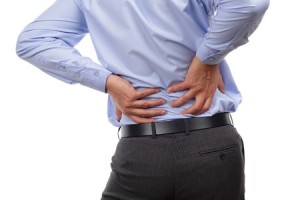Did You Know This About Low Back Pain?
To download a copy of this newsletter, please click here.
Clear Lake Chiropractor Comments: If you have low back pain (LBP), you are certainly not alone. Almost everyone at some point has back pain that interferes with work, daily activities, and/or recreation. Americans spend at least $50 billion each year on LBP. It is the most common cause of job-related disability and a leading contributor to lost work time. Back pain is second to headaches as the most common neurological condition in the United States. Fortunately, most occurrences of LBP go away within a few days. Others take much longer to resolve or lead to more serious conditions (1).
There are two types of low back pain – acute and chronic. Most episodes of acute LBP last from a few days to weeks, are not neurological and usually do not carry a high level of surgical risk. The  cause of LBP can be difficult to isolate because often, while the cause is cumulative where multiple events over time, the last activity the patient recalls is “bending over for a pencil.” This, by itself is not likely to cause an acute onset of LBP. Low back pain can be caused by trauma such as sports injuries, work around the house such as garden work, car accidents, and others. Chronic low back pain, by definition, is LBP that lasts more than 3 months and the cause can be more difficult to identify and is often cumulative and superimposed on a prior condition such as degenerative disk or joint disease. A real problem is the rate of recurrence or, chronic, recurrent low back pain where pain may subside but returns at various rates of frequency and duration. This category affects a high percentage of the population and represents the true challenge in spine care management.
cause of LBP can be difficult to isolate because often, while the cause is cumulative where multiple events over time, the last activity the patient recalls is “bending over for a pencil.” This, by itself is not likely to cause an acute onset of LBP. Low back pain can be caused by trauma such as sports injuries, work around the house such as garden work, car accidents, and others. Chronic low back pain, by definition, is LBP that lasts more than 3 months and the cause can be more difficult to identify and is often cumulative and superimposed on a prior condition such as degenerative disk or joint disease. A real problem is the rate of recurrence or, chronic, recurrent low back pain where pain may subside but returns at various rates of frequency and duration. This category affects a high percentage of the population and represents the true challenge in spine care management.
As people age, their bone strength and muscle stretch, strength and tone usually decreases due to lack of activity. When the disks begin to lose fluid and flexibility, their ability to cushion the vertebrae and function as “shock absorbers” also decreases. Disks can tear, bulge, and/or herniate which results in localized LBP and/or radiating pain that follows the course one or more of the 31 pairs of nerve roots (eg., “sciatica” down the back of the leg). Soft tissues such as joint capsules and ligaments lose their capacity to stretch and can tear more easily, resulting in a sprain or strain (muscle/tendon injury). Other conditions that either cause or contribute to LBP include arthritis, obesity, smoking, pregnancy, stress, poor posture and/or physical health, and can lead to unsatisfied patients if these co-contributors are not properly identified and discussed. Less commonly, LBP can be caused by a more serious condition such as cancer, fracture, infection, spinal cord compression, and various internal conditions (3). Emergency care may be indicated in these circumstances.
At Beecher Chiropractic, we will perform a complete examination, consider other contributing causes, and will treat the problem(s) causing the LBP condition. If needed, working with other allied health care providers will be arranged. Exercise, dietary recommendations, ergonomic or work modifications, spinal manipulation, and modalities will all be considered to help eliminate or control of the LBP. Methods of self-managing the LBP will be emphasized.
Dr. Ward Beecher practices at Beecher Chiropractic Clinic at 1001 Pineloch, Ste 700 Houston, TX 77062. You can schedule an appointment at BeecherChiropractic.com or by calling (281) 286-1300. If you have any questions regarding this blog, please comment below!

